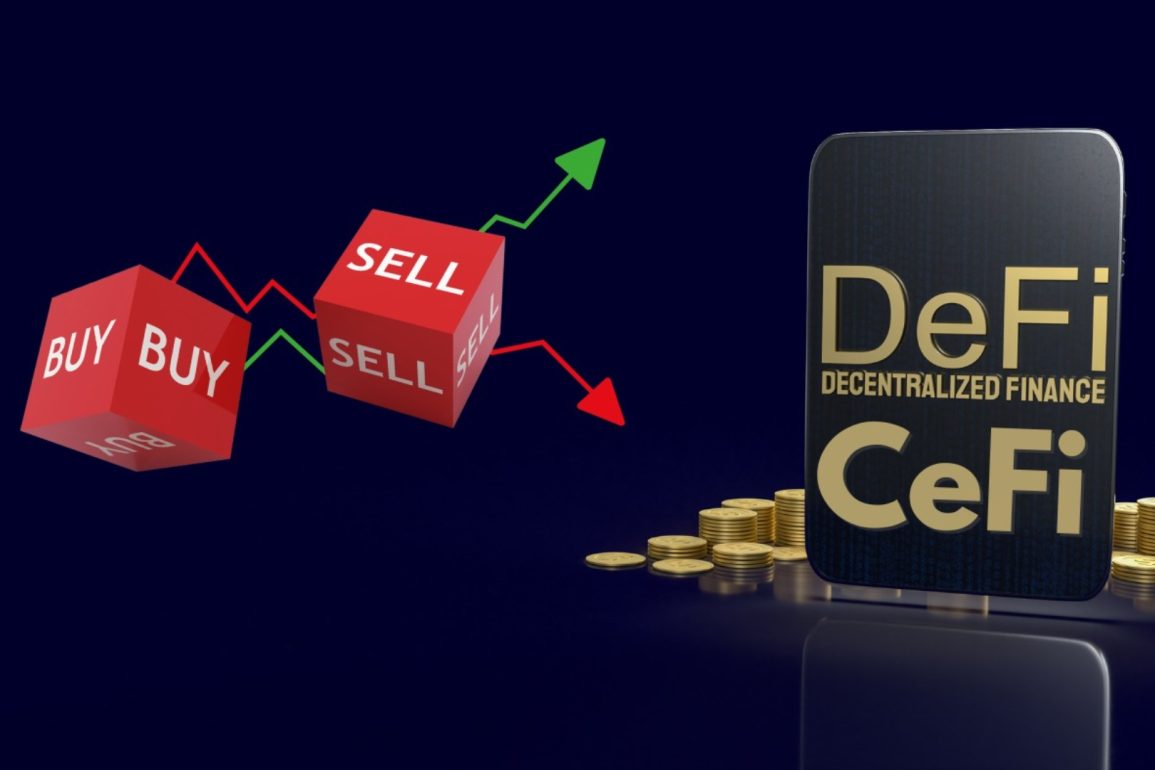- Summary:
- DeFi is a disruptor to traditional finance platforms. However, its growth has been limited by low liquidity in DEXs. Can CeDeFi change that?
Experienced traders have seen this all too often. They’re expecting the price of ETH to rally as a sharp gain turns into a bull run. A quick check shows the current bid-ask price at 1793.15 by 1794.80. So they place an order for 2 ETH and expect it to fill at 1794.80. But in those few seconds, as the trade is processed, rapid price fluctuations mean the quote is not quite accurate. Instead, they acquire at a price of 1795.20. The 0.4 difference between what they were expecting and what they actually received is known as “slippage.”
It’s a frustrating problem for cryptocurrency traders, made all the more complicated by the diversity of decentralized exchanges. Each platform has its own unique rules about how it operates, so slippage can vary from one to another. It can be even more acute on an exchange that has low liquidity, where only a fraction of a larger order is completed before it becomes subject to a higher price than first quoted.
The Slippery Nature Of DEXs
Slippage is all too common on DEXs (Decentralised Exchanges) because these decentralized platforms are not backed by a well-funded, centralized entity. Instead, they rely on automated market maker protocols or algorithms that determine the prices of assets based on certain conditions.
One of the most common approaches for DEXs is to use the “constant product” mechanism, where asset prices are determined as a function of the ratio of the DEX’s total reserves of each asset in the trading pair. The advantage of this is that the DEX can maintain a balance of both reserves.
The actual liquidity comes from “liquidity pools”, which are filled with assets donated by the exchange’s users in return for earning transaction fees. However, the reliance on liquidity pools means DEXs simply cannot compete with the largest Centralised Exchange (CEX) platforms. The result of this lower liquidity is that larger orders cannot immediately be fulfilled, meaning they’re subject to a much higher risk of slippage.
CEXs avoid slippage because they sit on a mountain of assets that enables them to provide their own liquidity. The difference can be quite stark. For example, Uniswap, the largest DEX platform in the business, typically facilitates around $1 billion in daily trading volume. That contrasts rather poorly with the NASDAQ, which does anywhere between $300 billion and $400 billion in daily trading volume, or even Binance, the biggest CEX, which currently does around $15 billion in daily volume.
Despite the liquidity problems of DEXs, they’re still much preferable for many traders because there’s no need to deposit their assets with the platform first. Users can simply connect their wallet and trade directly with other users via smart contracts without needing to trust any intermediary. The importance of maintaining control of your assets has been underlined all too often in the past year, with the collapse of centralized exchange platforms like FTX, Celsius Finance, Babel Finance and others.
How CeDeFi Can Prevent Slippage
Until recently, it has been impossible for traders to enjoy the best of both worlds. They’ve always had to make the stark choice of using a CEX or a DEX. But with the emergence of a new concept known as “CeDeFi”, or centralized-decentralized finance, traders can now enjoy the middle ground.
One of the main ideas of CeDeFi is that if a DEX can be paired with a CEX platform, it would be able to tap the additional liquidity of its sister platform to process trades much more efficiently than before. It’s this idea that inspired StormGain, one of Europe’s most popular CEX platforms, to create its own DEX, giving its customers the option of being able to maintain custody of their assets while still tapping into the liquidity of its CEX platform.
With StormGain DEX, traders’ orders will be executed promptly, even though users are trading between themselves via smart contracts. Unlike other DEXs, StormGain DEX has a significant advantage in that it can tap into the immensely deep liquidity of its CEX platform to ensure even the biggest orders can be fulfilled in seconds. The result is that StormGain DEX users suffer much less from slippage, while benefiting from greater leverage than other DEX platforms can offer.
Final Thoughts
The marriage of CEXs with DEXs is likely to be something that more traders will come across in the future. It minimizes the obvious disadvantages of using a CEX, namely the use of an intermediary, while still tapping into its major benefits. In some ways, it can be thought of as a hybrid exchange platform that provides ideal conditions for pro traders, with speedy transactions and high liquidity paired with full custodial control over their assets.


